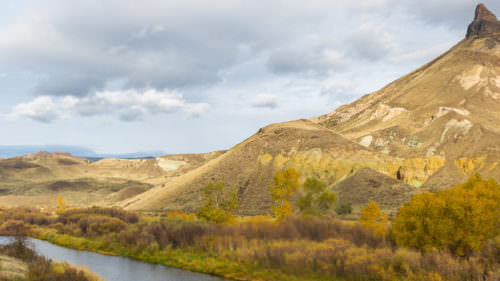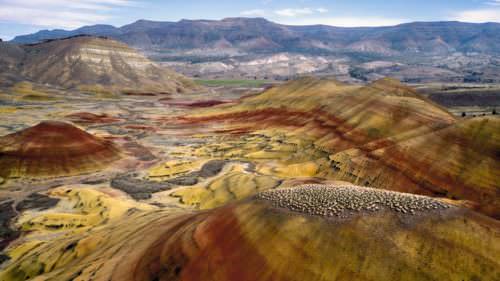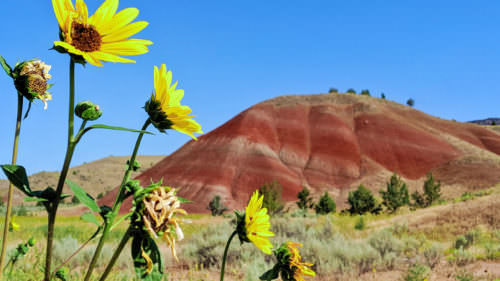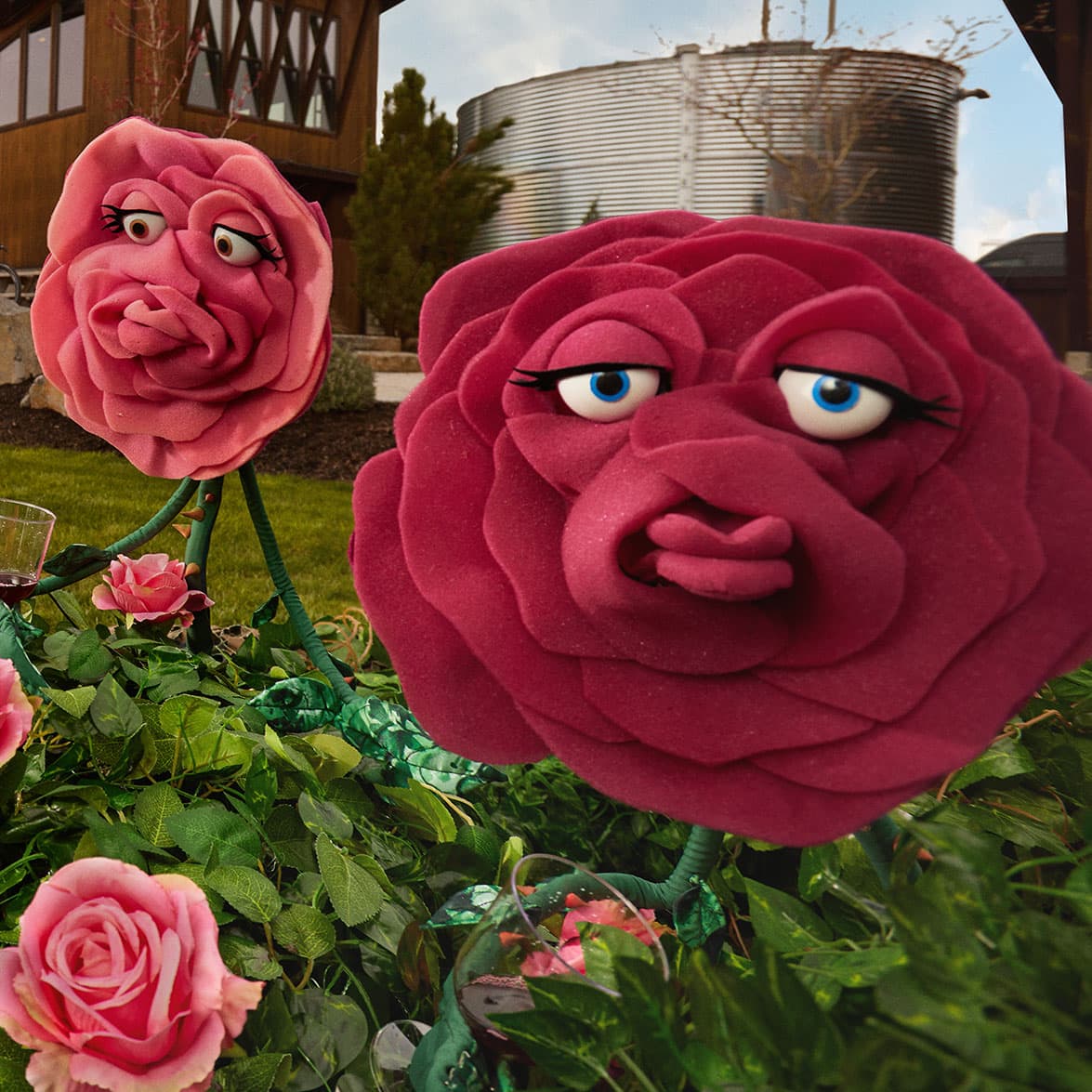Oregon’s vast and varied landscape is full of fascinating geologic history dating back millions of years, when deserts were oceans and spewing volcanoes created rocks with cores that gleam like jewels. Here’s where you can dig into a world of fossils, petrified wood and other geologic treasures right under your feet.
First, some collecting tips from a paleontologist: Nick Famoso, paleontology program manager at John Day Fossil Beds National Monument, grew up collecting fossils at Wheeler High School and on the Oregon Coast, locations he recommends as the most accessible and family-friendly public fossil sites in Oregon. Famoso notes that it’s important to be aware of the lands you’re on while collecting fossils and know the collection rules.
If you’re out collecting fossils, Famoso suggests wearing long pants and closed-toe shoes. During warm-weather months, bring sun protection and plenty of water. Tools such as a bucket, gloves, a rock hammer, a drywall spatula and a pocketknife are helpful, along with knee pads or something to kneel on.
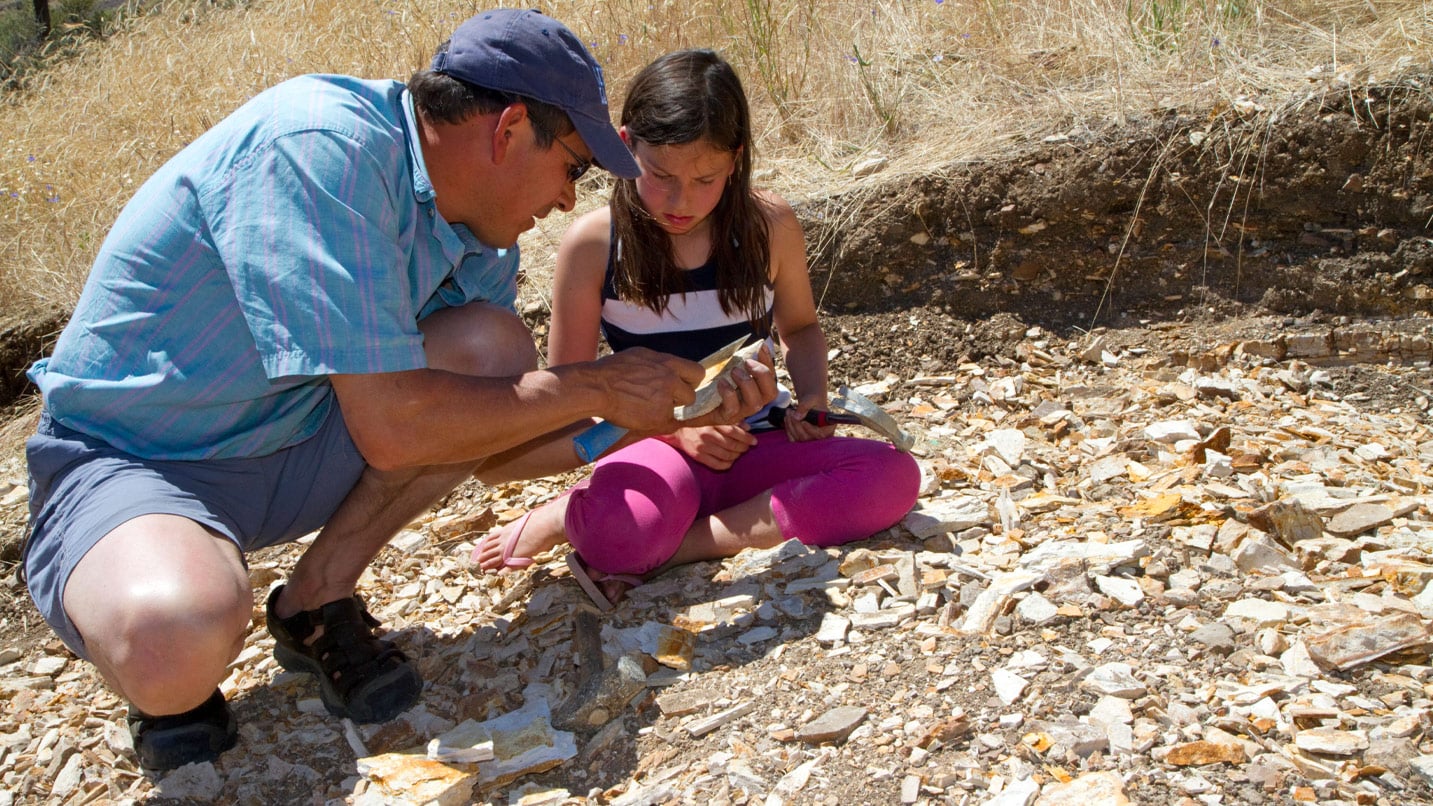
Find Fossils in … Fossil
What was once a shallow lake bed in a temperate rainforest 33 million years ago is now the fossil-laden grounds of Wheeler High School in Eastern Oregon. Here budding paleontologists can dig for fossils dating back to the Oligocene period, roughly 23 million to 66 million years ago. You will likely find leaves and branches of ancient deciduous trees that grew along adjacent stream banks and in nearby wetlands. Interpretive information helps you identify the fossils you unearth, which you are welcome to keep. Visit any time of year when the weather is mild — just remember to go early in the day during the summer months to avoid extreme heat, and pack plenty of water.
Before or after your fossil dig, walk over to the Oregon Paleo Lands Institute Center, where you can learn about the geology of the area and the fossils you find.
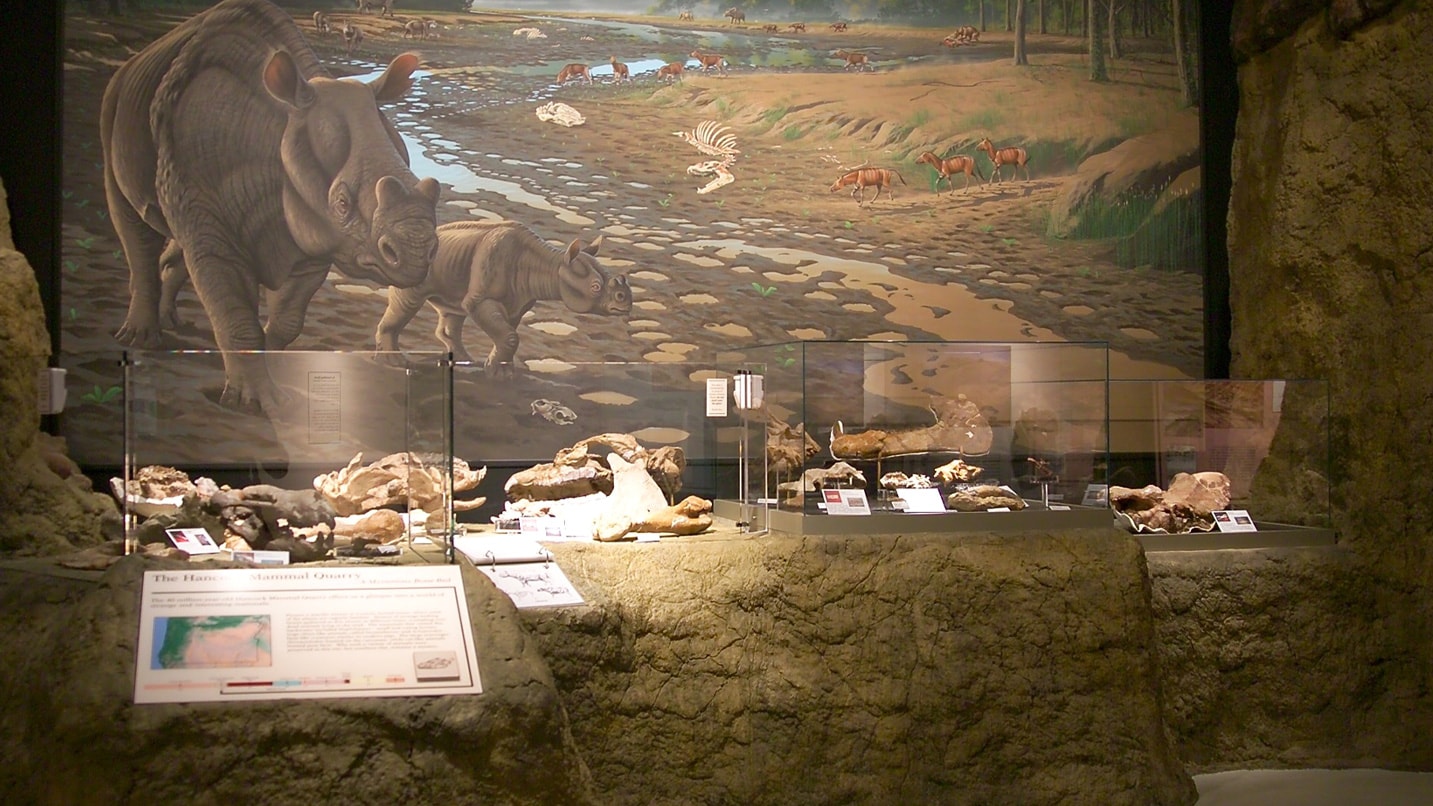
Hike Alongside Fossils at the John Day Fossil Beds
There’s no digging at the John Day Fossil Beds National Monument (part of the National Park Service), but there’s plenty to discover. The John Day Basin preserves a fossil record spanning more than 40 million years, with evidence of its changing plants, animals and landscape visitors can see while exploring the various trails. (Always make sure to stay on designated trails here, to preserve this sensitive ecosystem.) The park’s Thomas Condon Paleontology Center near Dayville has many fossils on display, along with elaborate murals depicting what life looked like in various eras. A window into the Fossil Lab lets visitors watch paleontologists at work.
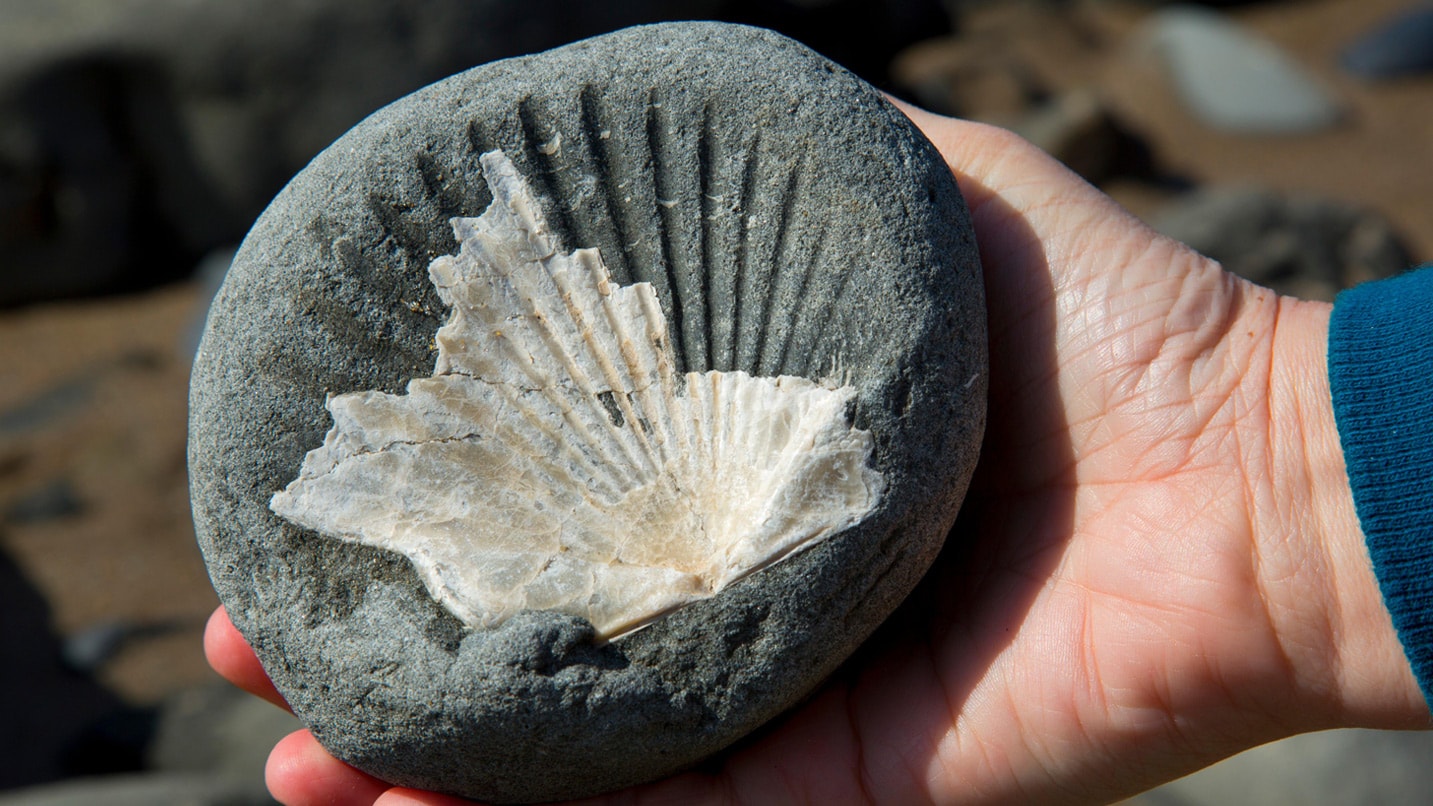
Comb the Beaches of Newport
Beverly and Moolack beaches near Newport on Oregon’s Central Coast are brimming with treasures for beachgoers. Nearby sandstone cliffs — part of an ancient seabed — erode into the surf and end up on the beach, exposing fossils of clams, snails and other marine invertebrates. The best time of year to hunt is late winter and early spring, when storms and high tides gnaw away at the cliffs and sweep sand from gravel beds that hide petrified wood and agates. Note that you are not allowed to remove fossils from cliffs or bedrock, but you can collect invertebrate fossil specimens you find on the beach.
While searching for beach treasures, remember to be aware of your surroundings, never turn your back on the ocean and watch for sneaker waves. It’s safest (and most productive) to beachcomb during low tide after a storm has passed. During your trip to Newport, be sure to visit the Oregon Coast Aquarium and see its “Cruisin’ the Fossil Coastline” exhibit, on display through August 21, 2022.
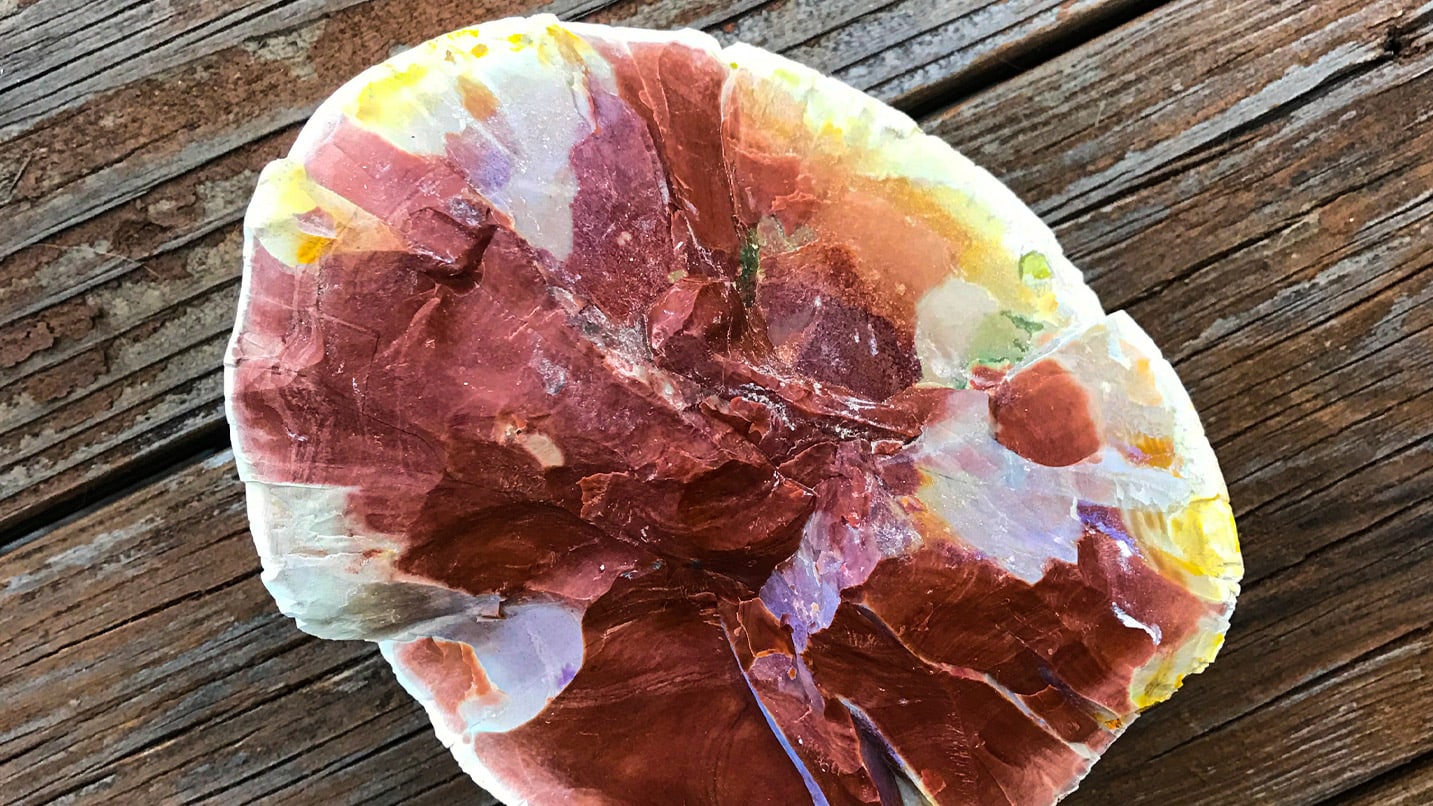
Search for Oregon’s State Rock
The rock-hounding haven of Succor Creek State Natural Area in Eastern Oregon is one of the state’s top spots to hunt for petrified wood and leaf fossils, and is especially known for its prevalence of thunder eggs. Oregon’s state rock, the thunder egg is a spherical geode-like rock often filled with gleaming agate, jasper or other minerals. Limited souvenir collecting by rock hounds is permitted in the park, which lies in a deep, rocky canyon 48 miles south of Ontario. Let your adventurous spirit guide you on the rough, 15-mile road from OR-201, but also be aware that this recreational site is remote, with no water, cellphone service, staff or volunteers, so come prepared with plenty of fuel in the tank, maps and your 10 Essentials. Succor Creek Canyon is open year-round for day use, with no admission fee.
